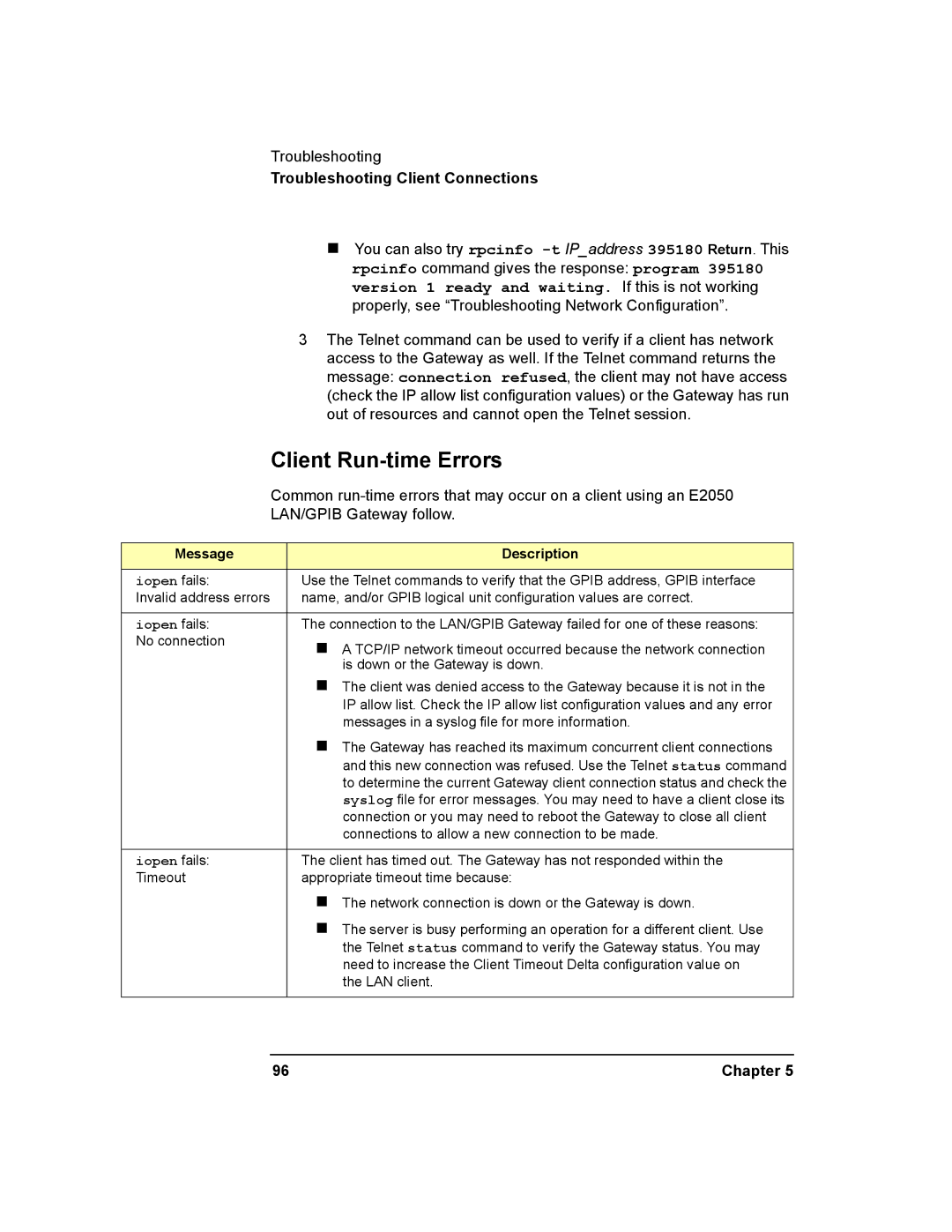Troubleshooting
Troubleshooting Client Connections
nYou can also try rpcinfo
3The Telnet command can be used to verify if a client has network access to the Gateway as well. If the Telnet command returns the message: connection refused, the client may not have access (check the IP allow list configuration values) or the Gateway has run out of resources and cannot open the Telnet session.
| Client | |
| Common | |
| LAN/GPIB Gateway follow. | |
|
|
|
Message |
| Description |
|
|
|
iopen fails: |
| Use the Telnet commands to verify that the GPIB address, GPIB interface |
Invalid address errors |
| name, and/or GPIB logical unit configuration values are correct. |
|
|
|
iopen fails: |
| The connection to the LAN/GPIB Gateway failed for one of these reasons: |
No connection |
| n A TCP/IP network timeout occurred because the network connection |
|
| |
|
| is down or the Gateway is down. |
|
| n The client was denied access to the Gateway because it is not in the |
|
| IP allow list. Check the IP allow list configuration values and any error |
|
| messages in a syslog file for more information. |
|
| n The Gateway has reached its maximum concurrent client connections |
|
| and this new connection was refused. Use the Telnet status command |
|
| to determine the current Gateway client connection status and check the |
|
| syslog file for error messages. You may need to have a client close its |
|
| connection or you may need to reboot the Gateway to close all client |
|
| connections to allow a new connection to be made. |
|
|
|
iopen fails: |
| The client has timed out. The Gateway has not responded within the |
Timeout |
| appropriate timeout time because: |
|
| n The network connection is down or the Gateway is down. |
|
| n The server is busy performing an operation for a different client. Use |
|
| the Telnet status command to verify the Gateway status. You may |
|
| need to increase the Client Timeout Delta configuration value on |
|
| the LAN client. |
|
|
|
96 | Chapter 5 |
